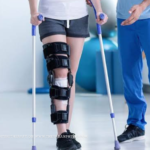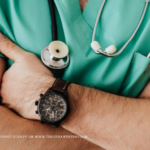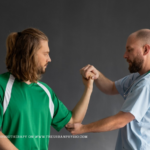Physical therapy is experiencing a revolutionary transformation through virtual reality and augmented reality technologies. These innovative approaches are reshaping how patients recover from injuries, surgeries, and various medical conditions, making rehabilitation more engaging, effective, and enjoyable than ever before.
Understanding VR and AR in Physical Therapy
Virtual reality in physical therapy involves putting on special goggles that transport patients into computer-generated worlds where they can practice movements safely. When a stroke patient practices cooking in a virtual kitchen before trying it at home, their brain responds to virtual movements almost like real ones, helping rebuild neural pathways essential for recovery. This technology creates safe environments where patients can make mistakes, learn, and improve without real-world consequences.
Augmented reality takes a different approach by adding helpful digital information to what patients see in the real world. Imagine seeing arrows showing exactly how to move your arm during an exercise, or a tablet displaying proper knee angles while doing squats. This instant visual feedback helps patients correct mistakes immediately, leading to faster skill acquisition and better movement patterns.
Why Patients Love VR/AR Physical Therapy
Traditional physical therapy often involves repetitive exercises that become monotonous – doing the same arm lifts 50 times gets really boring. VR/AR therapy transforms these necessary movements into engaging experiences, like playing a virtual tennis game while performing those same therapeutic movements. Patient feedback consistently highlights this transformation: “I forgot I was doing physical therapy – it felt like playing!”
The engagement factor significantly impacts treatment adherence and outcomes. About 8 out of 10 patients stick with VR/AR programs compared to only 6 out of 10 with traditional therapy. This improved compliance stems from game elements like earning points, unlocking levels, and competing with friends. Kids especially love virtual treasure hunts that require specific movements, while the motivation boost from seeing progress as colorful charts and achievements keeps patients engaged throughout their recovery journey.
Many systems also enable social connection, allowing patients to exercise “together” even from different locations. This feature combats the isolation often experienced during lengthy rehabilitation periods and creates a supportive community atmosphere that traditional therapy settings struggle to replicate.
Real-World Applications That Deliver Results
Stroke Recovery and Neurological Rehabilitation
Stroke survivors face the monumental challenge of relearning basic tasks like brushing teeth or making coffee. VR provides safe virtual environments where patients can practice these activities repeatedly without consequences. Success stories show patients often regain skills 30-40% faster than with traditional methods. As one therapist noted, “Patients can make mistakes safely and repeat activities until they master them,” building both competence and confidence simultaneously.
Post-Surgery Recovery
Patients rebuilding strength after knee or shoulder surgery benefit tremendously from AR systems that use camera technology to watch movements and show exactly what needs correction. The system warns if patients are pushing too hard or moving incorrectly, preventing re-injury while optimizing recovery. Real results demonstrate that many patients return to normal activities weeks earlier than expected with traditional rehabilitation timelines.
Pediatric Physical Therapy
Getting children excited about repetitive exercises has always been challenging, but VR/AR has revolutionized pediatric rehabilitation. Creative solutions like dragon-slaying adventures that require specific arm movements transform therapy sessions into anticipated activities rather than dreaded appointments. Parent testimonials frequently mention children asking when their next therapy session is, and professional observations show nearly all children complete their full treatment programs when VR/AR elements are incorporated.
Balance Training and Fall Prevention
Older adults and people with inner ear problems benefit significantly from VR balance training. Virtual scenarios include walking across wobbly bridges or navigating crowded spaces, all performed while wearing safety harnesses in padded rooms. This controlled environment allows progressive difficulty increases, and impressive outcomes show fall risk drops significantly after completing VR balance training programs.
Technology Behind the Innovation
Modern VR/AR physical therapy systems comprise several integrated components working harmoniously. Equipment includes lightweight VR headsets that create 3D worlds around patients, motion sensors that track body movements with incredible precision, tablets and phones often used for AR applications patients can take home, and specialized cameras that watch movements and provide instant feedback.
Smart software features power these systems with capabilities including:
- Personalized Programs: Systems learn what works best for each individual patient
- Progress Tracking: Detailed reports show improvement over time with measurable data
- Remote Monitoring: Therapists can check home exercises from their office locations
- Automatic Adjustments: Difficulty increases gradually as patients improve their abilities
Proven Results and Healthcare Benefits
Recovery speed improvements consistently demonstrate that most patients finish therapy 25-35% sooner than traditional timelines. Better outcomes show movement quality and strength often exceed traditional therapy results, while pain reduction reports indicate significantly less discomfort during recovery. Long-term success benefits typically last longer after treatment ends, providing sustained improvement that justifies the investment in these advanced technologies.
From a healthcare system perspective, cost savings occur despite expensive equipment because overall treatment costs often decrease due to shortened therapy durations and improved outcomes. Therapist efficiency improves as one therapist can sometimes monitor multiple patients simultaneously. Better documentation through automatic progress reports helps insurance and medical teams make informed decisions, while patient satisfaction ratings lead to better clinic reputations and increased referrals.
Addressing Challenges and Limitations
VR/AR physical therapy isn’t perfect for everyone, and honest discussion of limitations is essential for realistic expectations. Motion sickness affects some people using VR, similar to car sickness, limiting their tolerance for extended sessions. Age considerations show very elderly patients sometimes struggle with technology interfaces, though this improves as digital familiarity increases across age groups.
Fear factors include some patients feeling anxious about wearing headsets or interacting with unfamiliar technology. Physical limitations such as severe vision problems can make systems less effective, though adaptive technologies continue improving accessibility options.
Practical hurdles include significant initial investment requirements for equipment, extensive learning curves as staff require thorough training to use systems effectively, technical issues that arise with any computer-based system, and space requirements since VR needs room for safe movement without obstacles.
Future Developments and Market Growth
Exciting developments on the horizon include mixed reality systems combining the best of both VR and AR technologies, affordable home systems that patients can use independently, AI integration with technology that learns and adapts to individual needs automatically, and better graphics creating more realistic environments that feel truly lifelike.
Market growth indicators show rapid adoption with more clinics adding VR/AR systems monthly, growing insurance coverage acceptance from health insurance companies, global expansion as technology spreads to developing countries, and significant research investment as universities conduct extensive effectiveness studies.
Implementation Best Practices
Successful VR/AR physical therapy requires careful consideration of candidate selection and systematic implementation approaches. Ideal patients include those comfortable with basic technology and motivated to improve, with medical requirements including stable conditions without severe cognitive impairments. The age sweet spot typically shows best results in patients aged 20-65, though attitude matters most – willingness to try new approaches often predicts success better than age alone.
The step-by-step process begins with an initial assessment using traditional evaluation to establish baseline abilities, followed by technology introduction through short, simple sessions to build comfort. Program development creates customized exercises based on specific needs, while progress monitoring involves regular check-ins and program adjustments. Eventually, home transition allows patients to use portable systems independently.
Ensuring success requires starting slowly with brief sessions to prevent overwhelming new users, maintaining constant communication through regular feedback to optimize experiences, establishing safety protocols with clear procedures for handling adverse reactions, and keeping backup plans with traditional methods available if technology isn’t suitable.
Research Evidence and Real-World Data
Scientific support comes from hundreds of research papers demonstrating effectiveness across diverse populations, with long-term studies showing benefits maintained months after treatment completion. Comparison research consistently shows VR/AR outperforms traditional therapy in multiple measures, providing robust evidence for clinical adoption.
Real-world data reinforces these findings with impressive statistics:
- Patient Completion Rates: 85% finish full programs vs. 60% with conventional therapy
- Satisfaction Scores: Average rating of 9 out of 10 for VR/AR experiences
- Functional Improvements: Patients typically achieve 40% better outcomes than traditional methods
- Return to Activities: Faster resumption of work, sports, and daily tasks
Essential Takeaways for Healthcare Providers
Virtual reality and augmented reality in physical therapy represent fundamental advances that address core rehabilitation challenges. The engagement revolution transforms boring exercises into enjoyable experiences, while faster recovery consistently achieves better results in less time. Precise feedback provides guidance impossible with traditional methods, and safe practice environments allow repeated attempts at challenging tasks without injury risk.
Success factors include proper patient selection to maximize outcomes, adequate staff training as essential for optimal results, gradual implementation that starts simple to build confidence, ongoing support through continuous monitoring to ensure sustained benefits, and technology balance that combines high-tech tools with human expertise for optimal care delivery.
The future of physical therapy increasingly includes VR/AR technologies as standard rather than exceptional tools. As systems become more affordable, accessible, and sophisticated, these technologies will continue transforming rehabilitation medicine, offering patients faster, more effective, and more enjoyable recovery experiences that set new standards for therapeutic care.





